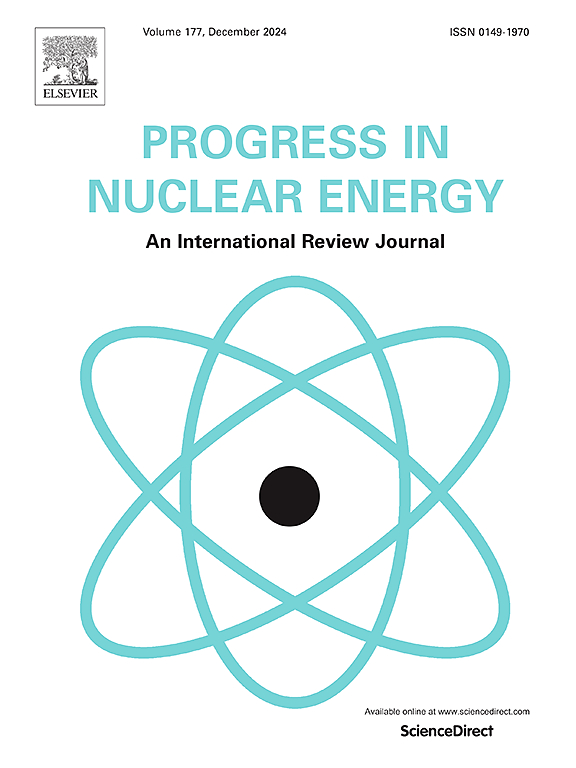A novel fully explicit GPU-accelerated discrete element method coupled with moving particle hydrodynamics (DEM-MPH) for simulating the underwater particle sedimentation behavior
IF 3.3
3区 工程技术
Q1 NUCLEAR SCIENCE & TECHNOLOGY
引用次数: 0
Abstract
Ensuring the safety integrity of the core catcher system during a hypothetical core disruptive accident (CDA) in a sodium fast reactor (SFR) is crucial, particularly regarding the formation of the debris bed. This study presents a novel, fully explicit Discrete Element Method (DEM) coupled with Moving Particle Hydrodynamics (MPH), accelerated on a graphics processing unit (GPU), to calculate debris bed formation with various particle sizes. The DEM approach is applied to the solid phase, while the liquid phase is calculated using the MPH method. The DEM-MPH method is explicitly updated to avoid significant differences in time steps and to efficiently accelerate calculations on the GPU.
For validation, a fundamental dam break simulation with tiny particle sizes (0.5 mm) was conducted. The simulation results show good agreement with experimental data in terms of the angle of repose and spread length. Additionally, the GPU-accelerated calculations demonstrated a calculation efficiency of several hundred times improvement compared to a single CPU.
The DEM-MPH method was also compared to a previous experiment conducted by Sun Yat-Sen University, demonstrating the capability of handling almost 10 million particles. The results indicate that particle size significantly impacts debris bed formation. As particle size decreases, the debris bed shape becomes flatter due to the more significant convection within the liquid pool and the drag force between the solid phase and the liquid. All calculations showed agreement with experimental results regarding debris bed height. Overall, the present DEM-MPH method shows great potential for understanding debris bed formation, which is indispensable for ensuring SFR safety.
求助全文
约1分钟内获得全文
求助全文
来源期刊

Progress in Nuclear Energy
工程技术-核科学技术
CiteScore
5.30
自引率
14.80%
发文量
331
审稿时长
3.5 months
期刊介绍:
Progress in Nuclear Energy is an international review journal covering all aspects of nuclear science and engineering. In keeping with the maturity of nuclear power, articles on safety, siting and environmental problems are encouraged, as are those associated with economics and fuel management. However, basic physics and engineering will remain an important aspect of the editorial policy. Articles published are either of a review nature or present new material in more depth. They are aimed at researchers and technically-oriented managers working in the nuclear energy field.
Please note the following:
1) PNE seeks high quality research papers which are medium to long in length. Short research papers should be submitted to the journal Annals in Nuclear Energy.
2) PNE reserves the right to reject papers which are based solely on routine application of computer codes used to produce reactor designs or explain existing reactor phenomena. Such papers, although worthy, are best left as laboratory reports whereas Progress in Nuclear Energy seeks papers of originality, which are archival in nature, in the fields of mathematical and experimental nuclear technology, including fission, fusion (blanket physics, radiation damage), safety, materials aspects, economics, etc.
3) Review papers, which may occasionally be invited, are particularly sought by the journal in these fields.
 求助内容:
求助内容: 应助结果提醒方式:
应助结果提醒方式:


